#sergei makarov
Text
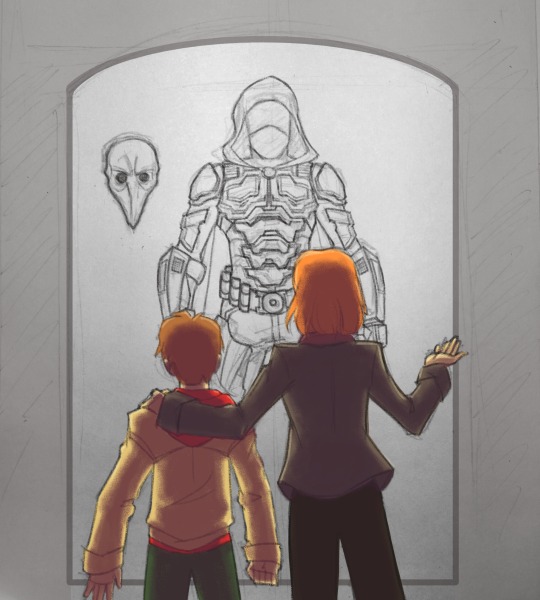
#my art#art#au#major grom plague doctor#major grom#plague doctor#sergei razumovsky#aleksey makarov#bubble comics#майор гром#сергей разумовский#леша макаров
43 notes
·
View notes
Text

cska moscow, 1987 [x]
#hockey#soviet hockey#spent like a solid ten minutes trying to figure out who’s who and (if i’m right)#fetisov is in the middle of the bottom row (w the k on his jersey). might be mogilny onthe same row on the right end (next to who is almost#definitely sergei makarov. to me he looks in between the front & middle rows but i’m gonna group him w the front even though he’s stood up)#oh and if you squint hard enough. that may be sergei fedorov in the middle row in normal clothes#trying to read the numbers on the jersey sleeves and it looks like krutov who is to the left of fedorov#kasatonov is probably lost somewhere in the back and igor. is not there ? can’t see him#hc cska moscow
11 notes
·
View notes
Text
so, y'all remember Joseph Tommas Riley, aka Simon 'Ghost' Riley's nephew that died in the comics???
I have seen some fics floating around the internet, about how things would turn out if Joseph survived and Simon had to drop out of the military to raise him.
I wrote one to those, expect that it's a little different. Instead of Joseph surviving the chrismass shooting, and Simon finding him and raising him, his 5 yo ass gets swaped with some other todlers corpse. Simon doesn't know this. Simon thinks his nephew is dead.
this idea quite frankly has endless possibilities, and I need people to get on this. Like, are you kidding??? The potential??? The angst??? the fluffy ending???
Joseph is a whole baby, like, that is a 5 year old boy. We can quite literally create a whole character for him.
does Roba take him to experiment and actually succeeds to brainwash someone only to make lil Joey a teen soldier to kill The Ghost?
Does he somehow end up getting adopted by the shadow company?
Does he get recused by Alejandro and Rudy? Roba was based in Mexico after all...
Maybe El Si Nombre runs into him as she's expanding her territory, who knows?
Does Makarov get him in the end and uses him to blackmail Price?
Fuck, does Makarov turn him into a child soldier?
The possibilities are fucking endless!!!
Do you know the amount of shit I can do with this kid?? Do you know how much trauma I can make this kid go through before his uncle even realizes that he's alive???
Anyhow, you have to wonder no longer have to wonder, bc I wrote this, and it's currently 26 chapters and 57k words. And btw, I went with the last promt, about him ending up in Makarov's hands and being used for leveradge.
(plot twist, I gave Vladimir Makarov a son (my oc) named Sergei Makarov. He's Joseph's age and hates his dad. That's all I'm gonna say)
anyway, here's the link to that :)
https://archiveofourown.org/works/48828328/chapters/123176245
#mw2#ghost cod#makarov#roba cod#Joseph riley#joseph riley cod#cod oc#child oc#captain price#John price#ghost#call of duty#fanfic ideas#someon help me get on this#bc this has become like a visceral need to me
21 notes
·
View notes
Note
Hi!
First and fucking foremost, I love your artstyle, it's so good, and I love your art style.
I while back, is stumbled accross your Chris Price comics, where Christopher Price was the son of Captain price from a past mariage that went sour. And honestly, Chriss has not left my mind since. I was wondering if I could maybe borrow him for a project that is mainly still a brain bunny.
You see, I have an idea for a series of fics about the next gen of the 141 growing up as teenagers. Starring Rodey Sanderson (half sibling of Roach), Nikita Garrick (gaz baby sister), Joseph Riley (ghost's nephew (who is actually a canon character, but I have essentially made him my oc)), Bonnie MacTavish (soaps cousin), and Sergei Makarov (Vladimir makarov's son, who later gets addoted by Nikolai). I really love your character of Chriss Price, and I would love to eventually write him as being part of the group.
I just love him and the story you gave him so much. I feel so much for the boy and god damn I would love to write him!
(you don't have to, please don't feel pressured to. he is your character.)
Aahhhh first off thank you so much!!
You can borrow him, I would love for other people to create their stories with him. Just credit me and maybe send me the story when you decide to post it!! I would love to read it, I always get excited when people create inspired by my stuff and you are always welcome to do so just inform me or ask!!
22 notes
·
View notes
Note
I have been sent here by another author and I have never been happier to see omegaverse stuff
~🧋
You honestly do not understand how much I love Omegaverse, 🧋. Me and a certain someone (you know who you are but luckily I will not tag you) talk about Omegaverse COD a lot to the point we have our own little AU of them and joke about Omega! Makarov and his breeding kink
Luckily for you and others I will be posting more Omegaverse content as I just love it
At the moment I have got three asks which I am trying to finish as I have been sick and finally have the time to finish them. The first is about Alpha!Reader finding out about Omega!Makarov being pregnant and how excited he is. The second is about Omega!Makarov and his breeding kink with all the insane shit it makes him do. And the third was an ask about Omega!Makarov using his pheromones to keep his Alpha going and I hope the asker is okay with me writing about Omega!Makarov and an Alpha!OC of mine because I read it and immediately thought about something for the two of them especially because I love an overstimulated and submissive Alpha
I am also writing something to celebrate having a 100 followers even if it is a bit late, alongside a very big and long project. It is a post that will have an Omegaverse headcanon for many, many COD characters
I will be honest when I say you can spam my inbox with anything -especially Omegaverse asks or headcanons because they fuel my day-
It can be general things, like just chatting or asking random things or asking about my AUs or characters in different scenarios, or (my absolute favourite thing) sending in things relating to the Omegaverse. Specific ideas for specific characters and what they would be like in the Omegaverse or just ideas for the Omegaverse as I have so many ideas for it and how it can work
I will write about virtually any character in COD but I prefer MW and the operators from the multiplayer as I know about them more. Old or the Reboot, it does not really matter to me. Although, I do have a preference for Makarov (which is quite obvious), König (again very obvious), Price, Nikto, Nikolai, Captain MacMillan, Captain MacTavish, and Andrei which I know is basic but I have a type
This is because of a certain someone specifically but I will also write for characters who are not in the COD but have been played by an actor in COD. It will be as if that character is in COD and related to different COD characters. You may have seen others do this but examples are Joe Graves from Six, Sergei from Berlin Station, Xavier from NCIS, etc.
Also, I have some COD OCs (15 to be precise for the moment, but it also can technically be counting as 16 due to one certain thing) that I do not mind writing about especially for Omegaverse as I have too many ideas. But, like for the above, I will only write about them or answer questions if specifically asked
All I need is for anyone sending in an ask to be very specific as I am quite dense due to being Autistic and I may not get it or misunderstand if it is not directly said what is wanted, I apologise for that. Just send asks in so I know what people want
Oh! And if you want to be an emoji anon just send in the emoji and I will make a list and tag for you
I hope you have a good day and are feeling well!
13 notes
·
View notes
Note
What do you think of uh- Makarov? sergeis unfortunate biological father. oh uh Zakhaev too that guys a dumbass aswell
[🌹]
``I'm glad they died.``
3 notes
·
View notes
Note
[ Sergei Makarov Offers Any Silver That Won't Kill Him A Hug And A Positive Father Figure. ]
[Hi you have like 50 of these gay motherfuckers hugging you now😭]
3 notes
·
View notes
Text
Two Russian State Duma deputies with the ruling United Russia party were reported dead on Sunday.
The death of 77-year-old Nikolay Bortsov, who served as a State Duma deputy since 2003, was announced by Igor Artamanov, the governor of the Lipetsk region. He died at his home Lebedyan.
On the same day, State Duma Deputy Dzhasharbek Uzdenov died at the age of 57 after a "serious and prolonged illness," Vladimir Vasilyev, head of the United Russia faction, said.
A number of prominent Russians have died in unexplained or unusual circumstances since Russian President Vladimir Putin launched his full-scale invasion of Ukraine in February 2022.
No cause was given for Bortsov's death. He had previously been hit by sanctions from the United States and other Western countries in connection with Putin's invasion of Ukraine.
Newsweek reached out to Russia's Foreign Ministry via email for comment.
Bortsov was one of Russia's wealthiest government employees, with an estimated net worth of $550 million, according to the Latvia-based independent news outlet Meduza. He was included by Forbes in 2021 in a ranking of the country's 100 richest federal workers.
He was sentenced in absentia in Ukraine to 15 years in prison on March 21 alongside 19 other members of the Russian State Duma for voting to recognize Russian-installed authorities in Ukraine's eastern Donbas region.
The Security Service of Ukraine said those convicted were: Sergey Altukhov, Andrey Alshevsky, Olga Zanko, Andrey Anikeev, Grigory Anikeev, Valentina Artamonova, Otari Arshba, Alena Arshinova, Timofey Bazhenov, Zarif Baiguskarov, Nikolay Bortsov, Vadim Bulavinov, Dmitry Islamov, Mikhail Kuzmin, Denis Maidanov, Nikolai Pankov, Yuri Petrov, Olga Pilipenko, Valentina Pivnenko, and Dmitry Pogorely.
The head of Russia's Investigative Committee Alexander Bastrykin called the verdict illegal.
Uzdenov, 56, was a member of Russia's House Committee on Ecology, Natural Resources and Environmental Protection.
"A hard day. Death snatched another comrade from our ranks. Jasharbek (Dzhasharbek) Borisovich Uzdenov, a deputy of the State Duma, the former Minister of Natural Resources and Ecology of the Karachay-Cherkess Republic died after a severe and prolonged illness," Vasilyev said.
Vasilyev expressed his condolences to the relatives and friends of Uzdenov.
"Sensitive, attentive, strong-willed, always ready to help—this is how we will remember Jasharbek Borisovich. He fought for a long time, but, unfortunately, the disease turned out to be stronger. We will miss him very much," he said.
Uzdenov was elected to the State Duma on September 19, 2021. He came under U.S. and New Zealand sanctions after the war began.
At least 20 Russians have died in mysterious circumstances since the war began last February, including Ravil Maganov, the chairman of Lukoil, Yuri Voronov, the founder and general director of the Astra-Shipping transport and logistics company, Vladislav Avayev, a former Kremlin official and vice president of Gazprombank, and Major General Vladimir Makarov, an officer who oversaw the Kremlin's crackdown on anti-war protesters.
9 notes
·
View notes
Text
Mix It Up Monday Response
For @onlycodcanjudgeme's Mix It Up Monday If you were to insert one Call of Duty character into a different game (another CoD universe or not), who would it be? How do you see that player interacting in a new environment?
Most of the Call of Duty archetypes were already present in Dream Daddy, with the exception of everyone's favourite wet-rat-man hybrid and famed Russian Ultranationalist terrorist poster boy: Vladimir Makarov.
Makarov lives in an absolutely monstrosity of a McMansion at the end of your street, set in its own grounds. His son, Sergei, is a right-wing misogynist on YouTube with a disturbingly large following and goes to school with your daughter, Amanda, who hates him. She is not able to sabotage your first date with Vladimir despite successfully pushing Sergei into his own fountain.
Vladimir 'You can call me Vovo, Любимый' Makarov invites you to dinner at his house, a charming, simple supper of blini, quails eggs, buttered potatoes and a pound of Beluga caviar, flown in from the Black Sea, accompanied by his favourite Tsarskaya Vodka, set in a bleak minimalist dining room that appears to have been designed by an interior decorator with a mortuary fetish.
The date goes well if you compliment his silk scarf, and express an interest in his collection of Stalin memorabilia. To get the good ending with Makarov, you must gun down at least twenty innocent civilians during an attack on a nuclear power plant to obtain enriched uranium for his cause. For this, you get the achievement 'Maybe it's love or toxic radiation?' and you never see Amanda again.
7 notes
·
View notes
Text
Guns we never got to use in Metal Gear Solid 2
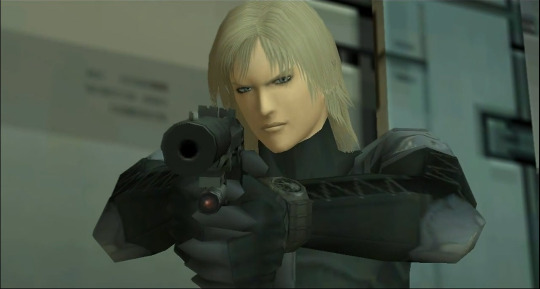
So, instead of gushing over how amazing MGS2 is, let's get down to brass tacks and immediately nerd out over what we didn't get.
First off, let's start at the beginning. Olga Gurlukovich, the woman who's the sole reason I start making monkey noises when I see a woman in super baggy pants with suspenders hanging down. She carries a PSS pistol;

The PSS is a silent semi-automatic pistol, this pistol gets tossed overboard before the player can get a chance to use it. If in use by the Gurlukovich mercenaries, we could imagine it would be a pistol with very scarce ammo, but also highly effective, being semi-auto. Probably considered a lethal option to the XM9.
Next up, we have the NRS2.
No good in-game picture available, so a picture of the real thing will do;

This highly unusual knife gun, which is fired with the blade pointed towards yourself. For gameplay, this could probably be used for focus on close quarters fighting, but with a possibility of shooting at something in the distance without needing to swap weapons. It would certainly be an interesting option that could make gameplay varied.
Next up, the Colt Single Action Army revolver.
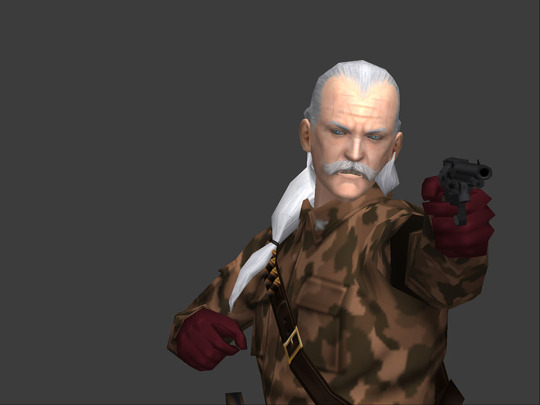
"This is the greatest handgun ever made. The Colt Single Action Army. Six bullets. More than enough to kill anything that moves."
It's clear that MGS3 figured out, holy shit, this gun is cool and we need to let the player use it. Especially, with how they added gameplay features to it, they decided to give the gun the ability to ricochet bullets so you can trickshot your way through Tselinogorsk. The same mindset in MGS2 could have made for some really interesting choices considering all the fancy indoor areas and hallways. There's also no proper magnum handgun for the player in MGS2, so if you want a handgun that can blast away common enemies in a single shot to the chest, this could have been it.
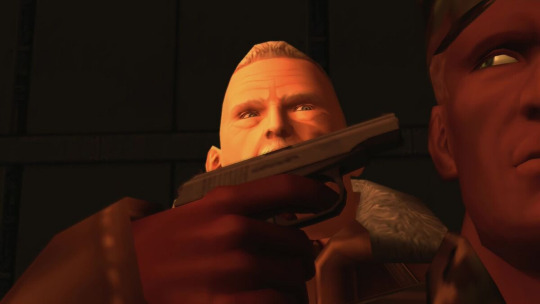
Sergei Gurlukovich himself pulls a Makarov on Scott Dolph during the tanker chapter. This would been a basic sidearm for the mercenaries and is understandably cut, it's a gun that it's difficult to make exciting for the player as it would performed the same as the USP, but lower capacity and no laser and no silencer. Then again, it could have been added purely for variety's sake. Which is always good to make something feel vast and a real universe.
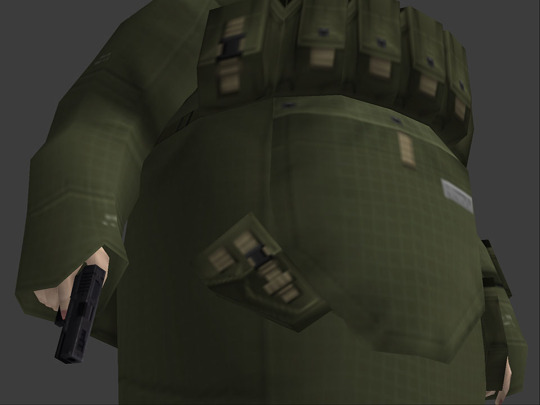
"Laugh and grow fat"
This one would be interesting in-game for the player. Provided it would be somewhat controllable for skilled players, and sharing ammo with the USP, it could be a hog for churning through your ammo and low range, but if used up closed, you could definitely do some solid bursts of damage. What magazine the gun would have, would definitely help decide if you could bursts a few enemies before reloading, or needing to reloading between every enemy.

This is another special one. It's already very special that a russian mercenary group would use a western shotgun such as the SPAS-12. It also features a combination pump and semi-automatic mechanism. This could in theory allow the player to change the firerate. Who knows for what purpose, there could be some video game logic like how they can only use the really powerful ammunition with a pump-action, and have the less damaging ammo be spammable with the semi-automatic mechanism. Or, they could skip that and make the shotgun be only pump or only semi, and then focus on how it works in that way. It definitely opens up a world of weird gameplay options.

Here's a weird one, a rail gun. MGS2 is a stealth game. I realize that, and I really like it. But it really suffers in the department of being able to do things at a distance outside of set pieces set up for sniping. It would definitely be a New Game Plus type of gun, maybe given out for playing through the game while helping or tranq'ing birds, not killing them. It would definitely be a great gun for taking out bosses. It was later implemented in Peace Walker, but required quite the team effort to use it efficiently. Clearly, the developers also loved this magnificent piece of art and weaponry in game.
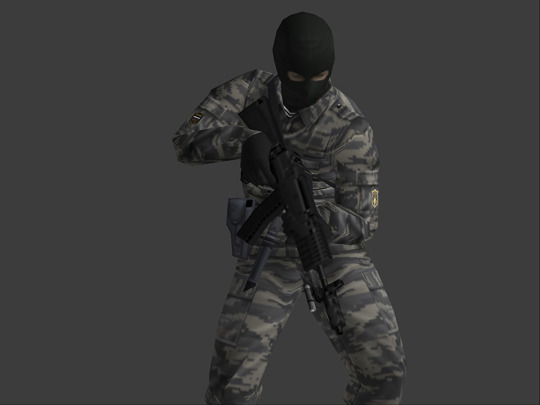
Here's another fun one. Assuming it would be a counter to the M4 later available in-game, the AN94, could possibly given the hyper-burst option, making it fire two rounds per trigger press in an insane fire rate. Looking at how the gun has a light or laser mounted onto it's front gas port/gas block, it looks really close to be able to be used by the player already.

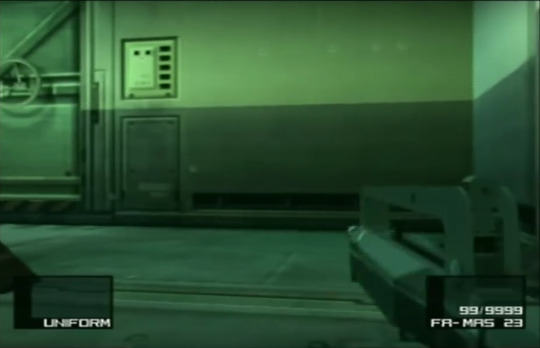
Here's a gun that is really known for being cut content. The French FAMAS. How it made it's way to the tanker or plant would be difficult to imagine considering it was supposed to be only for the genome soldiers in Alaska in MGS1. It would occupy the same purpose as the AKS74u and the M4 as well, so it wouldn't add anything new to the player, but it would feel familiar for returning MGS1 players. While not correct, the gun could have had a three round burst to differentiate it, like how it does in Counter-Strike 1.6 which is what I really know it from, form these days.

The FN P90. What a wonderful PDW. Again, another gun that's understandable that we don't have access to, as it wouldn't contribute much, but would also clutter an already weird to navigate inventory. It's equipped with the original old red dot sight, so in first person view, that would actually be very different for regular players of first person shooters with iron sights from these days.
Here's a really weird one, the SPP-1M Underwater pistol. Wait what? So in the original design of MGS2, there was an even greater focus on the underwater parts of the gameplay, even more fighting. Which explains why someone would suggest adding an pistol focused on underwater fighting. Probably also related to the cut Dead Cell member who went by the name "Chinaman" who was an olympic level swimmer, and if Vamp's boss fight wasn't annoying enough, I can totally see the need for a gun in that section. There is leftover code in the game that suggest this got quite far in development for player use, the gun itself as far as I know, don't have a model in-game.
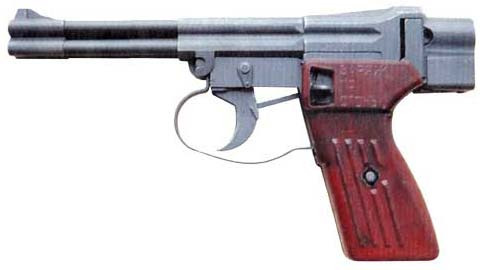
And here for the last firearm that should/could have been available to the player. The M203 grenade launcher. It's very clearly shown off in several cutscenes, being used by both the Navy Seals when confronting Fortune, as well as Snake Plissken;
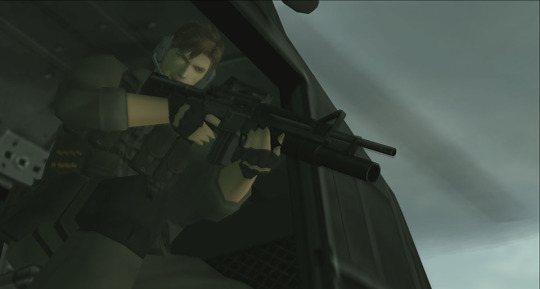
How this would be utilized in-game would be interesting. Could definitely be a very viable boss-encounter weapon with it's full-auto capability from the M4, and then being able to somehow quickly switch over to using the grenade launcher.
So in conclusion, many of this firearms were considered, but when we think about it, we can also clearly understand why much of it was cut, so there would be less work to do on bland equipment, so the developers could rather focus and shine up all the equipment that is actually interesting gameplay wise.
Most images blatantly stolen/copied from IMFDB.org, MetalGear.fandom.com and Wikipedia.
#mgs2#metal gear#metal gear solid 2#metal gear solid 2 sons of liberty#Glock 18C#Glock 18#Glock#Spas-12#Spas12#spas 12#P90#FN p90#PS90#5.7x28#9mm#12 gauge#Snake#Snake Plissken#Raiden#Jack Raiden#Saucy Jack
3 notes
·
View notes
Text
The Father of Modern Arthouse: How Renowned Russian Director Andrey Tarkovsky Transformed World Cinema
The Soviet Union's key filmmaker of the post-war era laid the foundation for the kind of output taken for granted by movie lovers today
— April 28, 2023 | RT

In the history of world cinema, the Soviet Union had two standout periods – the 1920s, during the boom of avant-garde cinema, and the late 1950s and early 1960s, during the "Khrushchev Thaw" (which was named for the opening up of society under the eponymous Nikita, after the years of terror under Joseph Stalin).
While the legendary Sergei Eisenstein, and other giants of the pre-war period, developed techniques that influenced the filming and montage of modern blockbusters, pictures of the latter period inspired arthouse genres.
Among the many post-war Soviet film directors, Andrey Tarkovsky had the greatest impact on world cinema. In 2018, the term “tarkovskian” – describing his unique “slow” and meditative style – was added to the Oxford Dictionary. Since Tarkovsky’s death in 1986, the influence of his cinematic style has spread from international film festivals to rock music clips and even video games.
Tarkovsky has a complicated reputation. His movies are often called “slow” and “boring." However, he remains the only Russian filmmaker of the second half of the 20th century whose work has become a yardstick for representatives of arthouse cinema, and whose name has inspired a search for a successor – for example, Mexican filmmaker Alejandro Gonzalez Inarritu and the Russian Andrey Zvyagintsev have both been called the “new Tarkovsky.”
What is it that makes Tarkovsky and his work so unique?
War, Home, and First Films
He was born in 1932. His father was poet Arseny Tarkovsky and his mother Maria – who later became the main character of one of his most prominent films, ‘The Mirror’ – was descended from the Dubasov noble family. She also attempted to write, but didn’t manage to build a literary career. Citing a “lack of talent,” she destroyed all her manuscripts.
Although Tarkovsky spent most of his life in Moscow, he was born in the village of Yuryevets in the Ivanovo region (about 500km northeast of the capital). After World War Two broke out, he was evacuated there with his mother – by that time his father had left the family. They lived in the village for just two years, but the wooden house would later reappear in ‘The Mirror’ as a symbol of an idyllic childhood. Throughout his life, Tarkovsky was haunted by the utopian image of “home.” In his films, a happy domestic life exists only in dreams (e.g., the central character's “lost” younger years from ‘Ivan's Childhood’) and memories. Meanwhile, Tarkovsky’s adult heroes often leave home (‘Solaris’), search for it (‘Nostalgia’), or destroy it (‘Sacrifice’).
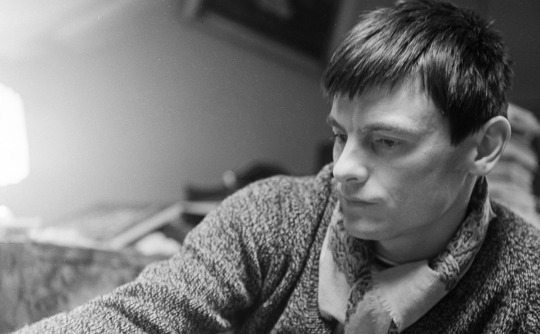
Andrei Tarkovsky © Sputnik/Alexander Makarov
In 1954, Tarkovsky entered the VGIK – the USSR’s most famous film institute. The beginning of his studies coincided with the Thaw period of cinema, which was radically different from previous Soviet movie eras. Young filmmakers who had gone through the war, or encountered it as children, were at the center of this new wave. During the Khrushchev years, the traditions of Stalin-era war cinema were reimagined. Similar processes occurred in other countries that contributed to the victory in WWII. The new motion pictures focused not on soldiers and battles, but on the unseen victims of the war for whom there was no place in Stalin's movies.
In the same year as Tarkovsky was admitted to VGIK, French critic and future film director Francois Truffaut published an article titled ‘A Certain Tendency of the French Cinema,’ where he formulated the Auteur Theory. Truffaut described how the filming process in earlier times was managed by producers and screenwriters, but how the director had become the key figure on the set, determining what to shoot and, most importantly, how the footage would be edited. The ‘auteur’ could be a director with an individual style or, as Tarkovsky said, an artist whose personality is “so significant that it determines the artistic qualities of the work.” Yet Tarkovsky was even more radical in his views on the nature of cinema than the French critics. He insisted that ‘auteur’ is a “qualitative concept” stating that, “good cinema is ‘cinema d'auteur.’ A good director is one who has a strong individuality and particular views on the phenomena of life.”
All that remains from Tarkovsky’s student period are several short films and his diploma work ‘The Steamroller and the Violin,’ which is thematically and stylistically close to Thaw cinema. It tells a story of friendship between a child violinist and a steamroller machine driver. Compared to the director's mature works, this traditional and realistic featurette is often relegated to the background. However, this ‘student’ film first shows us the artist-protagonist who is to become the focal point of Tarkovsky's work. His semi-autobiographical characters that grow up alongside their author – from the little musician of this debut work to the elderly writer from his final film, ‘The Sacrifice’ – invariably face the unknown, whether it is a socially-distant driver of a steamroller, the wish-granting room of ‘Stalker,’ or the divine revelation of his last movie.
Tarkovsky did not consider ‘The Steamroller and the Violin’ a great success and did not like talking about it. However, the film did its job – the director graduated from the institute with honors.
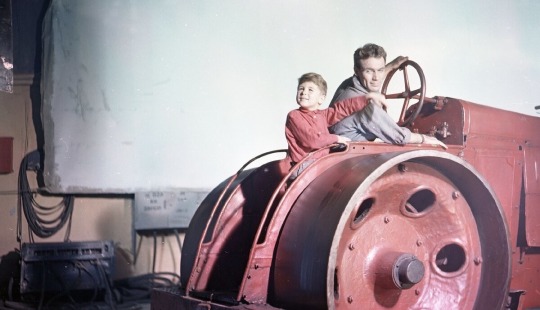
'The Steamroller and the Violin' (1960) Directed by Andrei Tarkovsky © Mosfilm
Global Recognition and First Conflicts With The Authorities
Tarkovsky's first full-length picture was the war drama ‘Ivan’s Childhood.’ Initially, this film – based on the story ‘Ivan’ by Vladimir Bogomolov – was shot by another director. However, Mosfilm Studio found that version “unsatisfactory.” It was particularly criticized for the free treatment of the original text in which the young partisan, Ivan, who was killed at the end of the story, instead survived in the movie and went on to volunteer in the Virgin Lands campaign. This new ending wasn’t approved by Bogomolov and completely contradicted his idea. The writer recalled how he contacted the newspaper which published an article about child partisans with an appeal, “Young heroes, respond!” As Bogomolov found out, no one responded – because no one had survived.
Tarkovsky was given limited time and the remaining budget to shoot his version. He significantly reworked the original text, focusing on the inner world of the child partisan Ivan. Dreams became key to his story. In these dreams, the boy sees his lost mother and lives a happy childhood. In ‘Ivan's Childhood,’ the ‘real world’ doesn’t hold back the dark, repressed desires of the subconscious. On the contrary, this real world is dark and cruel. As film critic Oleg Kovalov writes, the paradox of war is that “the poor child’s striving towards harmony, light, peace, and kindness become an almost shameful desire, a secret perversion.”
‘Ivan's Childhood’ won Tarkovsky the Golden Lion at the Venice Film Festival and brought him worldwide fame. At that time, ‘Thaw cinema’ was popular abroad and often received prizes at international festivals. In 1958, M. Kalatozov's war melodrama ‘The Cranes are Flying’ won the Palme d'Or in Cannes, and in 1961, G. Chukhray's film ‘Ballad of a Soldier’ won the BAFTA Award. Like ‘Ivan's Childhood,’ these movies looked at the war in a new way, moving away from heroic narratives and turning to the stories of its victims.
Tarkovsky's next movie was a medieval drama about the great painter of icons – Andrey Rublev. Despite a deep immersion in the medieval era, the director wasn’t obsessed with accurately reflecting the realities of the 15th century. In Tarkovsky's movie, Rublev, whose biography is practically unknown, is shown as an artist working in the horrible conditions of internecine wars, famine, and surrounding violence. His Rublev is a far cry from the ‘artist inspired by the people’ – the image approved by party officials. Tarkovsky has Rublev go through a loss of faith in people so that he may regain it in the finale after meeting the young bell caster Boriska. In an interview unpublished during his lifetime, Tarkovsky says that “the artist is the conscience of society” and the person who’s most sensitive to changes.
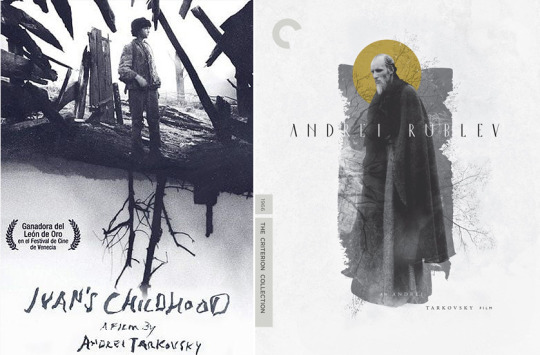
'Ivan's Childhood' (1962); 'Andrei Rublev' (1966) Directed by Andrei Tarkovsky © Mosfilm
During the production of ‘Andrey Rublev,’ a conflict first emerged between Tarkovsky and the Soviet officials who oversaw the studios. The movie was constantly edited, the major scene depicting the Kulikovo Battle didn’t get the required funding (after the film’s release, the press criticized the director for cutting this scene during final edits), and Tarkovsky was accused of excess violence. Eventually, the work was cut by 30 minutes and allowed only limited release three years after it was completed.
Aesthetic Dissident
After two movies focusing on past experiences, the events in Tarkovsky’s next picture unfolded on a space station in the near future. Despite the science fiction genre, ‘Solaris’ – a free adaptation of the novel by Stanislaw Lem (the author wasn’t satisfied with the film and said that Tarkovsky shot ‘Crime and Punishment,’ not ‘Solaris’) – is based on familiar themes: the conflict between reality and fantasy, human memory, and loss of home.
Tarkovsky didn't like genre films and entertainment movies, but science fiction provided a greater sense of allegory than historical events. While filming ‘Solaris’ and ‘Stalker,’ he could explore ideas that interested him while also feeling less pressure from the Communist Party. In her book on Tarkovsky, film critic Maya Turovskaya wrote that Tarkovsky was not a political, but an “aesthetic” dissident, and having minimal outside interference in his work was more important for him than political and economic freedom.
In his next movie, Tarkovsky wanted to explore the phenomenon of memory and to set himself free from the conventions of any genre. Initially, ‘The Mirror’ was planned as an interview film in which the filmmaker’s mother was asked a variety of questions – ranging from her own life to the Vietnam War – while being filmed with a hidden camera. Tarkovsky soon abandoned this idea and made a feature film, but one that was unique in its form.

'Solaris' (1972); 'Mirror' (1975) Directed by Andrei Tarkovsky © Mosfilm
Tarkovsky's co-author, screenwriter Alexander Misharin, remembered the first screening of ‘The Mirror’ by the chairman of the USSR State Committee for Cinematography who remarked, “Surely, we have freedom of creativity. But not to such an extent!” ‘The Mirror’ was in many ways the opposite of the director's previous film. The action descended from space to earth, and instead of a clear plot, it was based on a fragmented narrative imitating human memory where characters and events are layered on top of each other. For example, the main character’s mother and wife are played by one actress, which confuses the viewer and blurs the lines between childhood and recent events.
Instead of a simple, almost non-existent plot, the film is based on visual and thematic ‘rhymes’, which is why ‘The Mirror’ is often called “poetic cinema.” The film is based around the memories of a dying man in whose mind wartime childhood memories blend into the landscapes of Pieter Bruegel the Elder, historical chronicles rhyme with personal experiences, and his mother’s memories intertwine with his own.
By the decision of the State Committee for Cinematography, the film was not widely distributed in the USSR, although it was sent to Cannes. The film’s “unfriendly” exploration of consciousness and memory sealed Tarkovsky's status as an ”aesthetic dissident."
The director’s last movie in the USSR was ‘Stalker’ – a fantastic parable about the journey of the three main characters to a place where secret wishes are fulfilled. The filming process was accompanied by a series of misfortunes: the script was rewritten over ten times, the movie had to be reshot due to a technical issue in which several thousand meters of film were improperly developed and ruined, and Tarkovsky suffered his first heart attack. Stalker acquired the reputation of being a ‘cursed movie’ when, following the premiere, several members of the crew died within a short time, including the director's friend and one of his regular actors, Anatoly Solonitsyn, who played the role of the Writer.
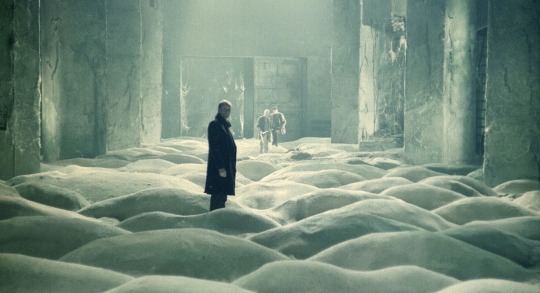
'Stalker' (1979) Directed by Andrei Tarkovsky © Mosfilm
After the futuristic ‘Solaris’ and the experimental ‘Mirror,’ ‘Stalker’ seems almost ascetic. Tarkovsky’s late works increasingly gravitate towards compositional simplicity and limited space – “finding a reflection of infinity in a small space.” For example, the characters in ‘Stalker’ don’t have real names, only nicknames (Stalker, Writer, Professor), and the picture’s post-apocalyptic world is much closer to the stagnant Soviet Union than the ‘city of the future’ from ‘Solaris.’
Conflict With The Authorities
Tarkovsky shot only seven full-length films in his 25 years of filmmaking, but up to the very end of his life, he had many creative plans. One of these was to work on a film in Italy – and in fact, this turned into the movie ‘Nostalgia.’ Tarkovsky waited for permission to start filming for over three years. He finally obtained it with the help of Italian screenwriter Tonino Guerra, who had some influence over Soviet officials. With Guerra, Tarkovsky began writing the script about a man traveling through Italy.
In 1980, Tarkovsky went to Italy to prepare for filming. While there, he had the chance to compare two styles of filmmaking – Soviet and Western. Tarkovsky didn’t have a preference for either and pointed out the shortcomings of each. While capitalist society gave the artist full freedom of expression, it also provided fewer opportunities for making his idea come to fruition.
In many ways, ‘Nostalgia’ anticipated Tarkovsky’s own future fate. The main character is a Russian writer who, like the protagonists of his previous films, travels not so much through Italy as through the realms of his own memory. Tarkovsky reveals the inner experience of emigration where the protagonist is stuck between two worlds, fully belonging to neither of them.
Tarkovsky did not initially plan on permanently leaving the USSR. Despite the fact that he and his wife were allowed to go to Italy, his son and mother had to stay in the USSR. Andrey Tarkovsky Jr. later said that they were left as “hostages” in the Soviet Union to prevent his father from permanently emigrating to the West. What exactly happened remains unknown, but apparently the leadership of the State Committee for Cinematography decided that Tarkovsky had become a so-called “non-returnee” and that he did not plan on coming back to the USSR. His name was banned from print in the USSR, and the Soviets withdrew from the production of ‘Nostalgia.’

'Nostalgia' (1983) Directed by Andrei Tarkovsky © Sovinfilm
Tarkovsky's letters to the general secretaries of the CPSU Central Committee Yuri Andropov and Konstantin Chernenko, in which he asks to work and live in Italy with his family for three years, have been preserved. The filmmaker emphasized that his last picture, ‘Nostalgia,’ was about “homesickness experienced by a Soviet person temporarily finding himself abroad” and that he had no plans to emigrate.
While Tarkovsky worked in the USSR, his relations with censors got progressively worse. At the premiere of ‘Nostalgia’ at the Cannes Film Festival, the Soviets, represented by film director Sergei Bondarchuk, went to great lengths to make sure that Tarkovsky would not receive the main prize. The confrontation ended in an open conflict. In a letter addressed to Secretary General Chernenko, Tarkovsky stated 11 points that demonstrated unfair censorship of his work. Among these were: illegal restrictions on the public release of his films, boycotts by USSR awards committees and film festivals, no press coverage, and the sabotage of ‘Nostalgia’ in Cannes. The betrayal he experienced in Cannes and in his homeland convinced Tarkovsky not to return home. In the summer of 1984, Tarkovsky announced his decision to stay in the West.
Farewell
‘The Sacrifice’ became Tarkovsky's last movie, most of which was filmed in Swedish. Tarkovsky was invited by the Swedish Film Institute, which covered most of the film's expenses. He was a big fan of the great Swedish filmmaker Ingmar Bergman, who lent the Russian director part of his own film crew: Bergman actor Erland Josephson played the leading role, cinematographer Sven Nykvist, who worked with Bergman on all his main films, was the cameraman, and the filmmaker’s son, Daniel Bergman, was his assistant. Moreover, Josephson and Nykvist invested some of their own funds into the film, becoming its co-producers.
By the time filming was over, Tarkovsky was diagnosed with lung cancer. ‘The Sacrifice’ – the story of an aging man who sacrifices his regular life and burns down his house to prevent a nuclear war – is often called ”prophetic." It stands as both the final testament of the dying filmmaker and a prophecy of the Chernobyl disaster that occurred just a few weeks before the premiere.

Film director Andrei Tarkovsky on the set of the movie 'Stalker' in 1977. In the picture: Andrei Tarkovsky and Larisa Tarkovskaya. © Global Look Press/Igor Gnevashev/Russian Look
Five years after Tarkovsky’s departure from the USSR, his sixteen-year-old son was allowed to visit his sick father. According to Alexander Gordon, a friend and co-author of Tarkovsky’s early works, party officials knew about Tarkovsky's diagnosis, but for a long time did not disclose it to his family. At that time, Tarkovsky’s previously banned movies were once again released in the Soviet Union.
Tarkovsky died at the end of 1986, at the age of 55. A few days later, the USSR State Committee for Cinematography released an obituary, expressing “bitterness and regret” that the filmmaker had worked away from his homeland in his final years.
Tarkovsky was buried at the Sainte-Geneviève-des-Bois Russian Cemetery near Paris – the final resting place of many Russian émigrés, writers of the Silver Age, and members of the White Movement.
2 notes
·
View notes
Video
vimeo
Coldxman - Blasphemy from Mauro Chiarello on Vimeo.
Director - Ian Pons Jewell
DOP - Mauro Chiarello
Producers - Jon Adams & Sasha Bevka
Prod Co: KAYFABE / Radioaktive
Prod Design - Robin Brown
Art Director - Evheniy Popovichenko
Costume Designer - Ameena Kara Callender
Choreographer - Charlie Mayhew
Make Up - Marta Skalska
Editor - Tobias Suhm
VFX Supervisor - Dan Williams
Colourist - Alex Gregory
Sound Design - Tim Harrison @ Aumeta
Song mastered - Dave Kutch
Post-producer + Cast coordinator - Emmanuelle Le Chat
1st AD - Dennis Sonin
2nd AD - Vadim Yuzba
PM - Julia Sotnikova
PC - Daniel Linnik-Zhuravlev
PAs - Vova Altsybeev, Anna Refel
Chaperone - Andrew Birch
Location manager - Dima Shevchenko
Bullet Typeface - 10Foot
CAMERA
2nd cam DP - Ilya Maksymenko
1st AC/Focuspuller - Sergey Kolesnik
Focuspuller cam B - Zhenya Bubley
AC cam A - Vadim Dubas
AC cam B - Vitaliy Topchiy
Phantom OP - Dmytriy Grymalskiy
Steadicam - Max Salo
GRIP
Dolly - Artem Pilipchuk
Dolly - Valeriy Legosha
CRANE
Crane - Serhiy Subota
LIGHT CREW
Gaffer - Leo Sidorenko
Key Grip - Oleg Egorov
Chief Electric - Anrew Gorovoy
Spark - Vova Akulov
Spark - Serhiy Rudenko
Spark - Vitaliy Schetinin
Grip - Eugene Scherbak
Grip - Dima Levchenko
PROFCOM TRUSS SYSTEMS
Light Desk Operator - AAnton Medvedev
DIT/PLAYBACK
DIT - Yan Wachowski
Playback - Rupos
Playback - Bear
Playback - Eugene Ischenko
Playback - Lisa Tagintseva
ART DEPT
Best Boy - Vitalii Shpakovich
Prop master - Serhii Godlevskii
CASTING
Casting Director - Nika Bondar
Casting assistant on set - Misha Voropay
WARDROBE
Stylist - Kostya Goncharuk
Assistant - Valeria Snesar
Assistant - Julia Belous
MAKE UP
Assistant - Maria Petrovskaya
Assistant - Daria Gnatuikova
UNIT
Helper - Tolik Oleshko
Helper - Aleksey Vodopyanov
Helper - Kirill Suzanovskiy
Catering - Tetiana Okhrimenko
MISC
Stills - Artem Nadyozhin @bornmentall
CAST
CLOWN - Alexandr Gerasimchuk
POLITICIAN
Veronika Boyarskaya
Mikhail Bondarenko
Larisa Chertkova
Lucia Foloronso
Boris Molodtsov
Jean Ossoa
Alla Priadko
Alexei Romanov
Vitaliy Shapovalov
Valeriy Skripka
Natasha Timoshenko
Maxim Vakhovskiy
Susanna Vyshneva
Ihor Zorov
Bakar Alwata
Pavel Evchin
Nicolay Bozhko
Julia Farradjalah
Phonsia Koba
AUDIENCE
Tsoi Tania
Pryhora
Katya Demydenko
Ostapenko Andrey
Ostapenko Yura
Ostapenko Dima
Gasanov Elmir
Chernyavka Vladimir
Yadav Vishal
Popenko Raisa
Averina Nastya
Otokhine Divine
Onopa Sveta
Misha Makarov @mishamihoan
Skisov Evheniy
Garsia Joanna
Dronchak Nantina @nantina__
Bello Akeem
Bahtiar Ibragimov
Syrovatka Tamara
Dolapo Oso
Maxim orobets
Galena_Nina
Muke Arno
Amir Hanani
Wale Adeyemo
Keita Abraham
Koval Vera
Danyil Voronov
Skargapolina @Skargapolina
Zavertalyuk @Zavertalyuk
Damien Paiatakov
Aryna Kucheieva
Vlada Malahova
Dima Nalivayko
Timofeieva Lidia
Ngegba Thomas
Chuikova Anna
Bespechuk Max
Brown Ester
Natasha Boyko
Shlyakovska Storozhuk
Vasylenko
Sanjaasuren
Khmelnyckiy
Hudabaeva Sveta
Odushu
Eysmont
Karplyuk
Monnie
Ten Nastya
Yulia Gomes
Potopa
Mukhina
Novikova
Kurtis Robaki
Alma
Gelmedova
Kryvoruvhenko
Devine
Konchakovskiy
Kushnerik
VFX - The Mill
Creative Director - Dan Williams
VFX Supervisor:
Adam Droy
Executive Producer:
Alex Fitzgerald
Producer:
Dan Crozier
Tarun Misra
Shoot Supervisor:
Dan Williams
2D Lead Artist:
Fergal Hendrick
3D Lead Artist:
Dave Hempstead
Umesh Namdev
Ashwani Patel
Gauri Razdan
2D Artist:
Anand Daunde
Abhishek Jain
Jijo Joseph
Putta Mahesh
Mahesh Mane
Sole Martin
Matt McDougal
Valeria Scalamandre
Oscar Tornincasa
Rafael Vormittag
3D Artist:
Santosh Ambre
Tony Atherton
Dinesh B
Ian Baxter
Amit Das
C Dinesh Reddy
Pradeep Katta
Fazal Khan
Henry Medhurst @Henrymedhurstfxtd
Sriram Namana
Guru Prasad
Showber Sadik
Vudhata Sai Krishna
Vinayak V
Roman Vrbovsky
Production Coordinator:
Jas Lewis-Humphrey
Ankita Mitra
Colourist: Alex Gregory
Additional clean-up:
Zdravko “Zee” Stoitchkov
Additional VFX - CGF
VFX SUPERVISOR
Alexey Uskov
VFX PRODUCERS
Ekaterina Averina
Aleksandr Gorokhov
ART
Sergey Manko
Konstantin Radchikov
MODELS
Ekaterina Glumova
Nadezhda Kolganova
RIG
Anton Pashkanis
Anna Guskova
FUR
Vadim Jiltsov
TEXTURES
Nina Druzhkova
FX
Evgeny Stefanov
ANIMATION
Evgeny Mischenko
Vlad Ladny
LIGHTING
Aleksey Petrov
CAMERA TRACK
Yaroslav Dyachenko
CLEAN UP
Anton Yarovoy
Sergey Likhachev
Alexey Zhurin
COMPOSITING
Victoria Demina
Alexey Kulikov
Dmitry Kirillyak
Oksana Leferova
Nikolai Kirienko
HEAD OF PRODUCTION
Alena Kucherova
DI
Stepan Neupokoev
Alexander Zolotarev @AlexanderZolotarev
TITLE DESIGN
Nico Chavez @ Done Thing
Song written, produced, mixed + performed by Coleman Hughes @coleman_hughes
Executive Producer - Desh @iamdesh
Legal - Gerard Anthony, Duane Hughes & Craig Cohen
Accounting - JT Goldstein
2 notes
·
View notes
Text
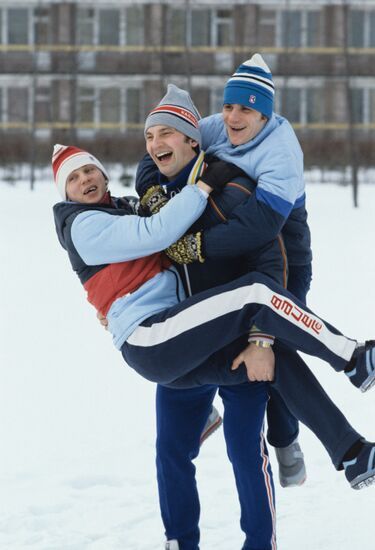
[x]
#hockey#soviet hockey#apologies for the absolute ass image quality but this has been making me go slightly insane#i also point blank refuse to share anything w a watermark. and the higher quality version of this has one#so lower quality it is#and yes that is igor larionov and sergei makarov being carried by tretiak
7 notes
·
View notes
Text
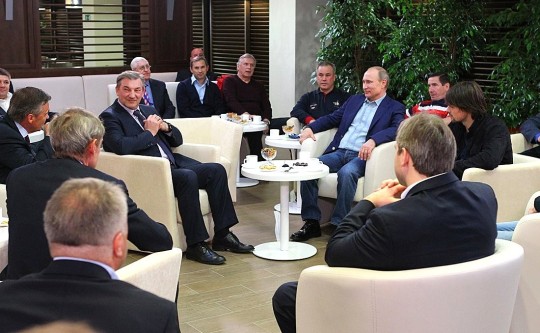

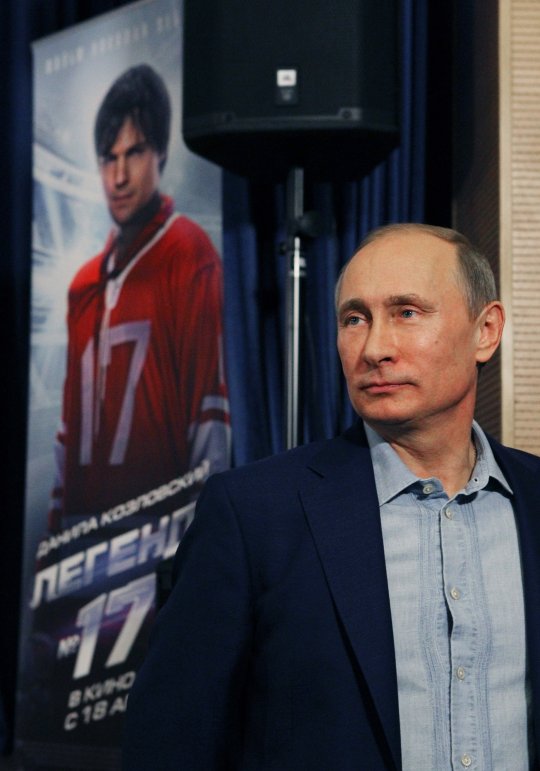


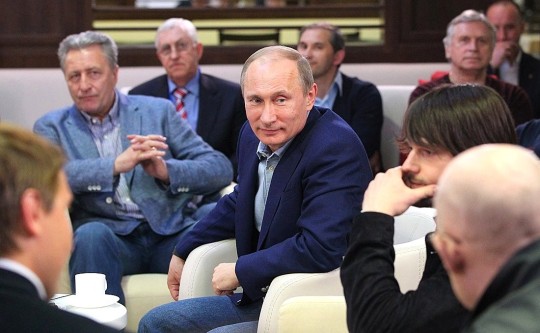

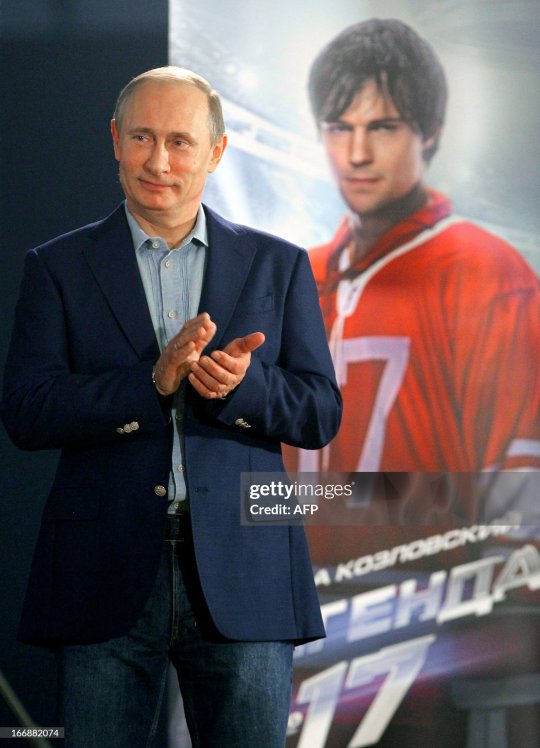

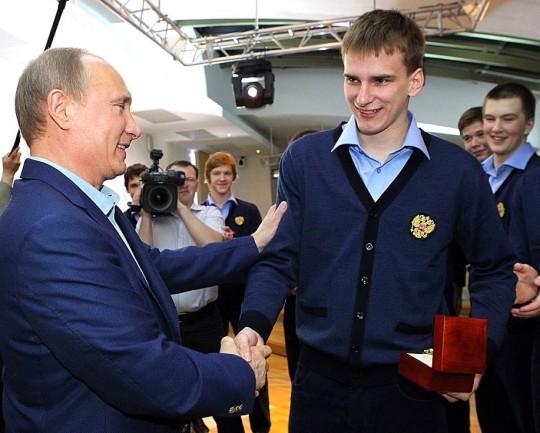

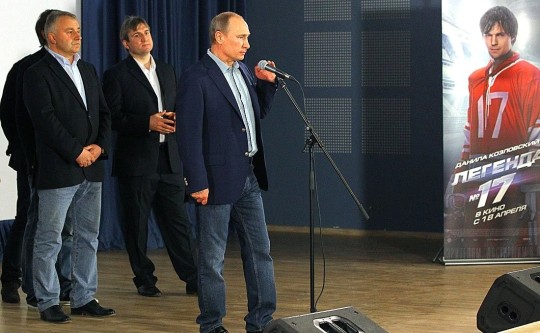

April 17, 2013
Vladimir Putin attended in Sochi the preview screening of Legend No. 17, a film telling the story of Valery Kharlamov, a legendary Soviet hockey player. The film has consistently ranked high among the most popular Russian motion pictures. Other guests at the preview screening included Soviet hockey stars Alexander Yakushev, Alexei Kasatonov, Sergei Makarov, Vladimir Petrov, Vladislav Tretyak, Vyacheslav Fetisov and the son of the famous hockey player, Alexander Kharlamov.
1 note
·
View note
Text
Hello! Mary Here. Feel free to ask any of the parents I have anything! Not sure they'll respond but I'll surely do what I can. Have fun with it! 😊
[👻] - Simon "Ghost" Riley. - He/Him.
[🦴] - Spirit! Simon "Ghost" Riley. - It/Its.
[🪳] - Gary "Roach" Sanderson. - He/They/Bug.
[🧢] - Kyle "Gaz" Garrick. - He/They.
[🔗] - Sergei Makarov. - He/Him.
[🎉] - Willow "Jester" Miller. - She/They/It.
[☠️] - R! Simon "Ghost" Riley. - He/Him.
[🧼] - R! John "Soap" Mactavish. - He/Him.
1 note
·
View note
Text
The Kyiv Independent Ukraine Daily:
Monday, October 31
UN, Turkey, Ukraine reach deal to move 16 ships. The three parties agreed on Oct. 31 to move 16 ships that are in Turkish waters following Russia's decision to exit the UN-backed Black Sea Grain Initiative that had allowed food exports from Ukraine's Black Sea ports, Reuters reports, citing a statement from the Joint Coordination Center in Istanbul.
Bloomberg: Wheat prices soar after Russia exits grain deal. Wheat futures surged after Russia exited the UN-backed Black Sea Grain Initiative to allow grain exports from Ukraine's Black Sea ports, Bloomberg reports. If price rises continue, the recent setback in supply caused by Russia pulling out of the deal could add to global food inflation and worsen hunger, Bloomberg wrote.
Russia says it’s ready for negotiations with the West. Russian Foreign Minister Sergei Lavrov said on Oct. 30 that Russia is ready for negotiations if the West “fully takes into account the interests” of Russia and its security, as well as “offer some serious approaches that will contribute to defusing tensions,” as reported by Russian state-controlled RIA Novosti.
Governor: Russian troops blow up bridge over Krasna River in Luhansk Oblast. According to Luhansk Oblast Governor Serhii Haidai, the Russian forces are “afraid” that Ukrainian forces “are very close,” as Ukraine's counteroffensive in the region continues.
General Staff: Russia to withdraw heavy artillery from Kherson. Russian forces plan to remove its artillery from the Dnipro River's right bank in Kherson Oblast, which includes the city of Kherson, the General Staff reported on Oct. 30. The units that were stationed there could be transferred to other front-line areas, it wrote.
Official: Russia plants more mines around Sievierodonetsk, brings mobilized troops. The number of Russian troops has increased in the strategic city of Sievierodonetsk in Luhansk Oblast, according to the head of this city's military administration, Oleksandr Striuk. He said Russians "mine everything around" and "build fortifications." Russian forces have also set up a training camp for some of the recently mobilized soldiers in Sievierodonetsk, Striuk said.
Investigation: Oct. 29 drone attack likely hit Russian frigate Admiral Makarov in Sevastopol. GeoConfirmed, a group of volunteers that maps Russia's war against Ukraine, published videos showing Unmanned Surface Vehicles (USVs), or ship drones, attacking the Russian Black Sea Fleet in Sevastopol, a port city in Russian-occupied Crimea.
UK intelligence: Wagner Group now prioritizes ‘numbers over experience or quality’ when recruiting troops. According to the U.K. Defense Ministry, the Wagner Group is recruiting Russian convicts suffering from severe diseases, including HIV and hepatitis.
Bloomberg: Russia may be using components from imported home appliances for military purposes. According to Bloomberg, the sudden rise in the European exports of home appliances to the countries neighboring Russia may be helping Moscow's war effort.
Ambassador: Germany shouldn't accept Russian men fleeing mobilization. Russian men fleeing mobilization in their country pose a security risk to other states, Ukraine's new ambassador to Germany, Oleksiy Makeyev, told German newspaper Bild am Sonntag. According to him, these men are also dangerous to "all young Ukrainian women with children" abroad.
The human cost of Russia’s war
Governor: Russia’s attacks kill 5 civilians in Donetsk Oblast on Oct. 29. According to Donetsk Oblast Governor Pavlo Kyrylenko, they were killed in the settlements of Antonivka, Pervomaiske, Druzhba, Klishchiivka, and Yelyzavetivka.
General Staff: Russia has lost 71,200 troops in Ukraine since Feb. 24. Ukraine’s General Staff reported on Oct. 30 that Russia had also lost 2,672 tanks, 5,453 armored fighting vehicles, 4,120 vehicles and fuel tanks, 1,724 artillery systems, 383 multiple launch rocket systems, 197 air defense systems, 274 airplanes, 252 helicopters, 1,412 drones, and 16 boats.
International response
Blinken discusses Russia's war with Chinese Foreign Minister. U.S. Secretary of State Antony Blinken spoke with China's Foreign Minister Wang Yi, during which Blinken raised Russia's war against Ukraine and the threats it poses to global security and economic stability, according to a statement by the U.S. Department of State.
Turkish drone company Baykar to develop air-to-air missiles to counter kamikaze drone attacks in Ukraine. The new munitions, based on the existing Sungur air defense missiles, will be deployed on Bayraktar combat drones, including the TB2, which is currently serving in Ukraine.
Polish MFA: Russia has no intention of honoring international agreements. "Russia's decision to suspend its participation in the grain initiative is further evidence that Russia has no intention of honoring any international agreements," the Polish Foreign Ministry said. Poland is ready to continue working to help Ukraine and those in need to transport essential goods, the ministry added.
La Republica: Italy sends over 20 self-propelled howitzers to Ukraine. According to the Italian newspaper, from 20 to 30 US-made M109 155 mm self-propelled howitzers are to be sent to Ukraine. These M109 howitzers are part of the latest military aid package agreed upon by now-former Prime Minister Mario Draghi, La Republica reported.
1 note
·
View note